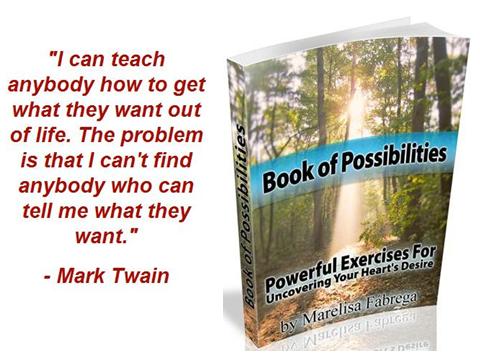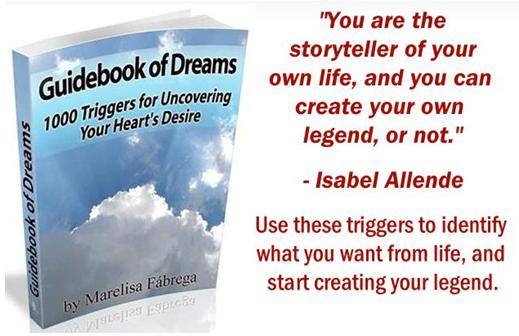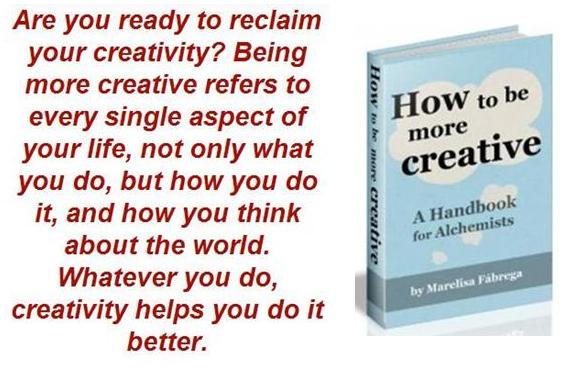
Mind maps engage your whole brain and allow you to see the big picture.
A mind map is a whole-brain method for generating and organizing ideas which is largely inspired by Leonardo da Vinci’s approach to note-taking. The concept was brought into the mainstream by Tony Buzan and is based on patterns found in nature, and on research on how humans think and how the brain works.
 In “How to Think Like Leonardo da Vinci”, Michael J. Gelb explains that by using mind mapping regularly, you can train yourself to be a more balanced thinker, like da Vinci. Gelb adds that mind mapping stimulates both brain hemispheres: it lets you develop a logical sequence and detailed organization of your material, while encouraging imagination and spontaneity. In fact, he explains that the note-taking styles of many of history’s geniuses feature a branching, organic structure complemented by lots of sketches, creative doodles, and keywords.
In “How to Think Like Leonardo da Vinci”, Michael J. Gelb explains that by using mind mapping regularly, you can train yourself to be a more balanced thinker, like da Vinci. Gelb adds that mind mapping stimulates both brain hemispheres: it lets you develop a logical sequence and detailed organization of your material, while encouraging imagination and spontaneity. In fact, he explains that the note-taking styles of many of history’s geniuses feature a branching, organic structure complemented by lots of sketches, creative doodles, and keywords.
These geniuses include Charles Darwin, Michelangelo, Mark Twain, and, of course, da Vinci. Below you’ll find step-by-step instructions for creating mind maps, as well as 14 brilliant uses for mind maps.
How to Create Mind Maps: Step-by-Step Instructions
Mind maps represent a task or an idea in pictorial form with a minimum of words. They rely on key pictures and keywords that act as triggers. Here are step-by-step instructions for creating mind maps:
Step 1. Get a plain sheet of paper and turn it so that it’s on its landscape side. You’re also going to need colored pens and/or pencils.
Step 2. In the center of the page draw a picture or paste an image that represents the central concept of your mind map. Then, write down a keyword which represents the central idea.
Step 3. Use colors throughout. Adding images and colors stimulates right-brain thinking. That is, it stimulates creativity and imagination.
Step 4. What are the main concepts or ideas that can be derived from the image and/or keyword you’ve placed in the middle of the page? Do the following:
- Draw anywhere from three to ten thick branches leading out from your central image/keyword.
- Make the branches curve and flow.
- Try to make each branch a different color.
- Choose an image and a keyword for each branch.
Step 5. Look at your branches and begin making free associations. Draw smaller sub-branches that stem from each branch to accommodate the new associations that you’re making.
Step 6. Connect third-level branches from the ends of the sub-branches. You can even create a fourth and a fifth level. Let your mind work freely by association and have fun.
Step 7. Throughout the mind map, use keywords. Keywords exercise your analytical “left brain” and help you find the essence of your subject. However, using too many words will restrict your thinking. Try using just one keyword per line; this will give you the freedom to discover lots of creative associations for your keyword.
Step 8. Use images throughout. Images make the mind map more interesting and more memorable. In addition, pictures generate far more associations than words do.
Step 9. When you’re done with your initial mind map, do the following: add details; jot down questions that radiate from particular nodes; and draw little “vines” that connect ideas on different branches.
14 Brilliant Uses For Mind Maps
Now that you know how to create mind maps, here are 14 brilliant uses for mind maps:
1. Use Mind Maps For Idea Generation. Place an image in the center of the page that represents the topic for which you want to generate ideas. From that image, start to radiate out every idea that comes into your mind on that subject-matter. Create a branch for each idea.
Look at the branches and see what ideas are triggered by the keyword and the image on each branch. Put these new ideas down as sub-branches. Next, brainstorm at least three ideas for each sub-branch and put these down as third level branches. You can stop there, or you can add a fourth level.
When you’re done, look through your final mind map and decide which idea you’re going to implement. Finally, go out into the world and implement your idea.
2. Use Mind Maps to Better Retain Information From Books and Articles. Most people complain that they quickly forget what they read. However, there’s a way to remember and retain more of the books and articles that you read. You can achieve this by creating a mind map each time that you read something that you find informative or helpful.
When you’re reading a book, the branches of the mind map can be the chapter headings of the most important chapters. Then, write down the main ideas of each chapter as subheadings. Third level branches can include examples, quotes, and even your own comments on what you just read. In the fourth level you can write down ideas on action steps that the book or article has inspired you to take
3. Use Mind Maps For Problem Solving. When problem solving, insert an image which represents the problem you’re having in the center of a piece of paper, along with the appropriate keyword. Then, draw six branches leading out of the center image/keyword and write one of the following questions on each branch:
- What?
- When?
- Where?
- Why?
- How?
- Who?
Answer these questions in the sub-branches of your mind map and proceed to free-associate solutions to your problem from there.
4. Use Mind Maps to Take Notes During Meetings. When you’re at an office meeting, do the following:
- Write the purpose for the meeting in the center of the page.
- Each agenda item will be represented as one of the main branches on your mindmap (get the agenda ahead of time, if you can).
- As the meeting progresses, add sub-branches to each agenda item with the main points discussed for each item (ideas, facts, budget, who is going to do what, and so on).
- Draw pictures and interlink items.
5. Use Mind Maps to Set Life Goals. Write “Life Goals” in the center of the page (you can also draw an image of yourself or paste a photo). Choose what you consider to be your main life areas. These can include travel, adventures, family, contributions, career, finances, and so on. Each one of these will be one of the branches of your mind map.
Further divide each life area in a way that makes sense to you. For example, the “Family” branch could be divided into the following sub-branches: parents; siblings; spouse; kids; extended family; and so on. Then, write down at least three life goals for each of your sub-branches. These will be the third level branches.
As fourth level branches you could write down ideas on how to achieve each goal, a deadline, the resources that you’ll need, and so on.
6. Use Mind Maps for Project Management. What’s the name of the project that you’re going to be working on? Write it down in the center of the page. What are the main tasks that need to be completed for the project? Write those down as sub-branches. Divide the main tasks into sub-tasks and write those down as third level branches.
For each sub-task you can create a fourth level by adding information such as duration, cost, materials needed, and so on.
7. Use Mind Maps to Write Your Novel. Put your story’s tentative title, or the genre, in the middle of the page. Your branches can be the following: Setting; Characters; Conflict; Theme; Plot; Scenes; and Point of View. The “Character” branch–for example–can be further broken down by creating a sub-branch for each character.
Then, create third level branches by creating a character profile for each character. You can write down things such as the following: Age; Appearance; Occupation; Income; Education; Special Characteristics; Strengths; Flaws; and so on.
8. Use Mind Maps to Write Ebooks. If you’ve been trying to write an eBook for a while but you keep getting stuck at the planning stage, a mind map could be just what you need. What’s your eBook’s topic? Write that down at the center of the page.
Then, add ten branches. Temporarily label them Chapter 1, Chapter 2, Chapter 3, and so on. Later on you can add the specific titles of each chapter, but for now just write down potential topics. For each chapter include sub-branches with ideas of what you’re going to include in each chapter. Then, as a third level, write down examples for each of your ideas.
9. Use Mind Maps to Write a Business Plan. Write the name of your business or your business idea in the center of the page. The branches are the major components of your business plan. This can include things such as your business concept; your legal structure; your marketing plan; a market analysis; your financials; and your sales strategy.
Further divide each of the main components by adding sub-branches. For example, your “Marketing Plan” branch could lead to the following sub-branches: brochures; press releases; web site; social media; advertisements; and so on.
10. Use a Mind Map to Write Your Memoir. Write down your name at the center of the page. Your main branches could be something like the following: early childhood; adolescence; college; life after college; marriage; retirement; and so on. Taking “early childhood” as an example, you could create the following sub-branches:
- School
- Friends
- Neighborhood
- After-School Activities
- Chores
- Holidays
- Family Life
- Pets
- Favorite Memories
- Traumatic Events
Then, you can take “School” and further divide it as follows: Favorite Subjects; Favorite Teachers; Grades; Riding the Bus; School Books; Learning to Read; Kids From School; and so on.
11. Use A Mind Map to Plan Your Finances. Creating a mind map of your finances is a good idea since it illustrates the big picture of your financial life. The branches of your financial mind map can include things such as the following: Income; Expenses; Debt; Investments; Retirement Plan; Estate Plan; and so on.
Each branch can then be further broken down into sub-branches. For example, the “Estate Plan” branch could be broken down into the following: Will; Revocable Living Trust; Power of Attorney; Health Care Proxy; and so on. You can choose to add more details by adding third and fourth level branches.
12. Use Mind Maps for Your To-Do List. Write something obvious such as “to do” at the center of the page. Then, identify your main categories and put those down as branches. Here are some examples: Blog; Work; Home; and Errands. List the tasks that you need to get done for each of your categories as sub-branches.
As an illustration, for the “Blog” category you could add the following sub-branches: write a blog post; share the blog post on social media; spend 15 minutes on Twitter; visit three blogs in my niche and leave comments; and email potential sponsors.
For a third level you could further break down each task: include time limits for each task; include more information about the task; and so on.
13. Use Mind Maps for Holiday Planning. The holiday that you’re planning goes in the center of the page. Let’s use the 4th of July as an illustration. Draw an American flag and write down “July 4th” at the center of the page.
Then, create a branch for each major area that you need to plan. Here are some examples:
- Barbecue
- Decorations
- Parade
- Fireworks Show
- Teach the kids about the 4th of July
The “Barbecue Branch” can be further broken down with the following:
- Drinks
- Food
- Snacks
- Dessert
- Backyard Activitivies for the Kids
- Music
Each sub-branch can be further broken down by adding more details. As an illustration, you could create third level branches for “Dessert” with the following: flag cake; cupcakes with sparklers; carved watermelon filled with fruit; red, white, and blue jello; and so on.
14. Use Mind Maps for Yearly Planning. Write down the year that you’re going to be planning in the middle of the page. Create branches: each branch represents a goal for the year. For example, let’s say that one of your goals for the year is to make an additional $12,000 which you’re going to put down toward your retirement.
You’re going to divide that goal into four milestones; each milestone is a sub-branch. Here are your four sub-branches:
- Make $3,000 by March 31st.
- Make $6,000 by June 30th.
- Make $9,000 by September 30th.
- Make $12,000 by December 31st.
Then, further break down each milestone. Continuing with our example, the sub-branch “Make $3,000 by March 31st” can be broken down as follows:
- Make $1,000 by January 31st.
- Make $2,000 by February 28th.
- Make $3,000 by March 31st.
Those are your third-level branches. Your 4th level branches can be the action steps that you’re going to take in order to make that money.
Conclusion
Mind maps are a fantastic tool for generating ides, organizing your life, planning, and so on. The 14 uses for mind maps explained above are just the beginning. Live your best life by engaging your whole mind with mind maps.




Related Posts:





 Marelisa Fabrega is a lawyer and entrepreneur. She holds a Bachelor of Science in Business Administration from Georgetown University in Washington, D.C., as well as a Juris Doctor from the Georgetown University Law Center. You can learn more about her
Marelisa Fabrega is a lawyer and entrepreneur. She holds a Bachelor of Science in Business Administration from Georgetown University in Washington, D.C., as well as a Juris Doctor from the Georgetown University Law Center. You can learn more about her 





